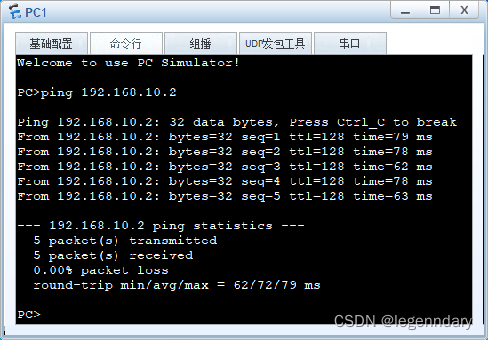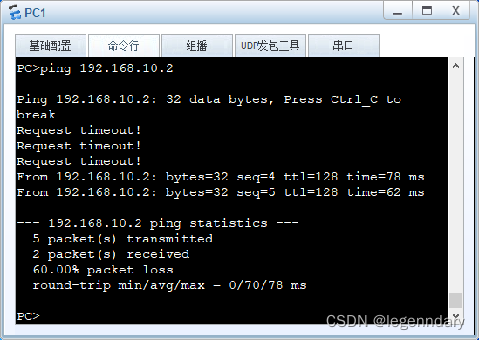mission details
A company's network center uses multiple redundant links on the connection of the aggregation layer switch in order to access the network stability. In this way, the redundancy and backup effect between the links can be realized, and the network interruption caused by the single point of failure on the backbone link can be avoided.
mission requirements
(1) Improve the bandwidth of the backbone link, network topology diagram

(2) The port IP addresses of PC1~PC2 are set as shown in the table

(3) Set the GE0/0/23 and GE0/0/24 ports of the two switches as port aggregation to realize the link aggregation function and increase the backbone link bandwidth.
knowledge preparation
Ethernet link aggregation Eth-Trunk is called link aggregation for short. It bundles multiple Ethernet physical links together to form a logical link, so as to achieve the purpose of increasing link bandwidth. At the same time, these bundled links can effectively improve link reliability through mutual dynamic backup.
As the network scale continues to expand, users have higher and higher requirements for the bandwidth and reliability of backbone links. In traditional technologies, bandwidth is often increased by replacing high-speed port boards or devices supporting high-speed port boards, but this solution requires high costs and is not flexible enough.
Link aggregation technology can increase link bandwidth by bundling multiple physical ports into one logical port without hardware upgrade. While achieving the purpose of increasing bandwidth, link aggregation adopts the mechanism of backup links, which can effectively improve the reliability of links between devices. The link aggregation technology has the following three main advantages:
(1) Increase bandwidth: The maximum bandwidth of a link aggregation port can reach the sum of the bandwidth of each member port.
(2) Improve reliability: When an active link fails, the traffic can be switched to other available member links, thereby improving the reliability of the link aggregation port.
(3) Load sharing: In a link aggregation group, load sharing can be realized on active links of each member. Detailed explanation of common link aggregation operation commands.
①Add member ports to the aggregation group in batches Add five member ports GE0/0/1 to GE0/0/5 to Eth-Trunk1 in batches.

②Delete the specified member port from the aggregation group There are two ways to delete the member port as follows, please choose one according to your needs. Run the undo trunkport command in the Eth-Trunk port view.

Run the undo eth-trunk command in member port view.

③ To delete an aggregation group, execute the command undo interface eth-trunktrunk-id in the system view.

task implementation
Refer to the diagram to build the network topology, use straight-through cables for all connections, turn on the power of all devices, and set the corresponding IP address and subnet mask for each computer.
Complete the configuration of switch SW3A.

Complete the configuration of switch SW3B.

Check the information about link aggregation group 1 on switch SW3A.

Check the information about link aggregation group 1 on switch SW3B.

task acceptance
Test PC connectivity. Test connectivity to PC2 on PC1
Change the topology and retest. Remove one connection of the aggregation port (shutdown the port where it is located), and re-test the connectivity. We will find that if one connection is removed, the connectivity of the PC is not affected (there will be a short-term packet loss)


task summary
(1) When setting the port aggregation of the switch, each port can be added in turn, or members can be added to the aggregation group in batches.
(2) The selected ports must be consecutive.
(3) Since the port aggregation group is generally used in conjunction with VLAN, it should be set to Trunk mode.